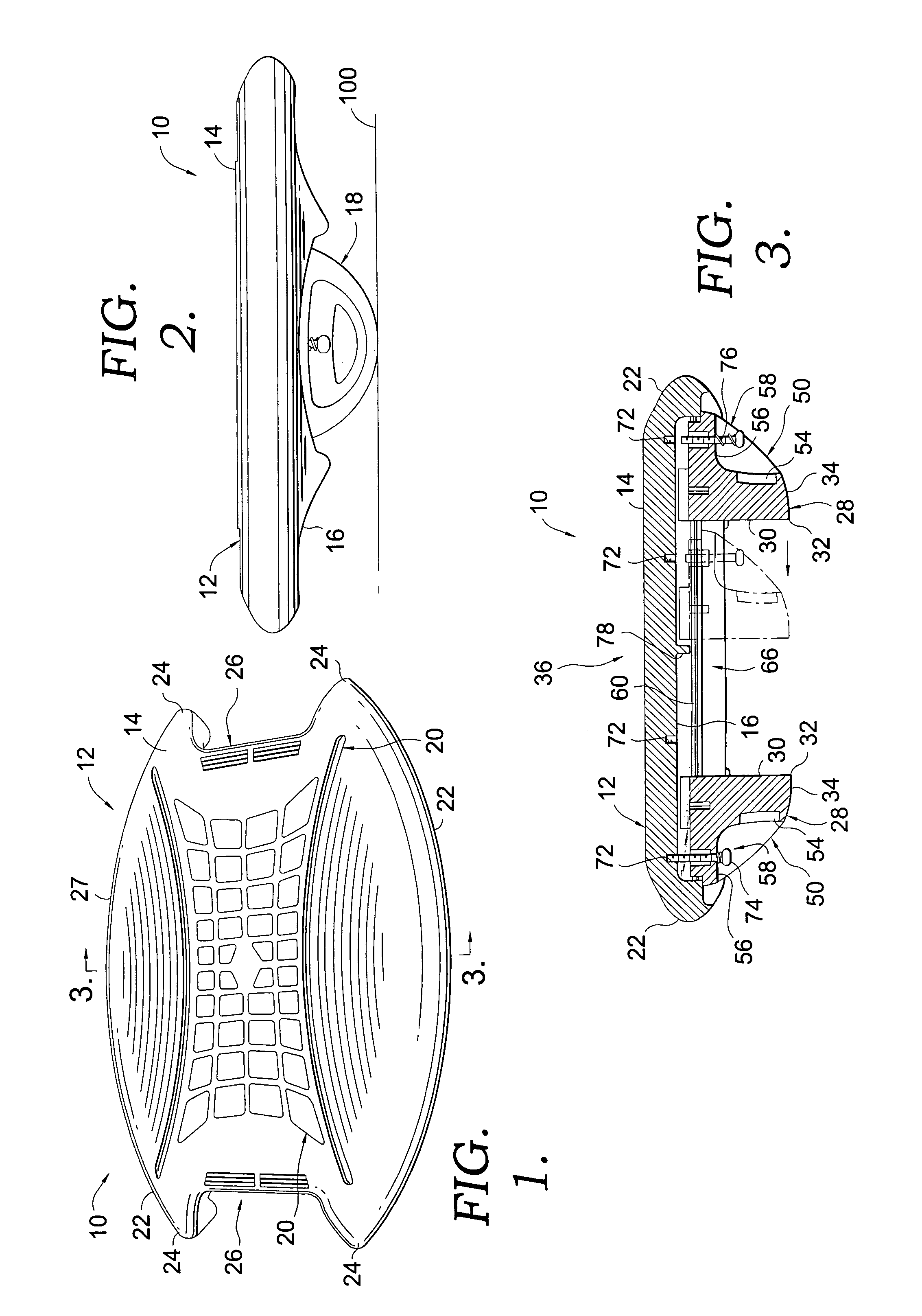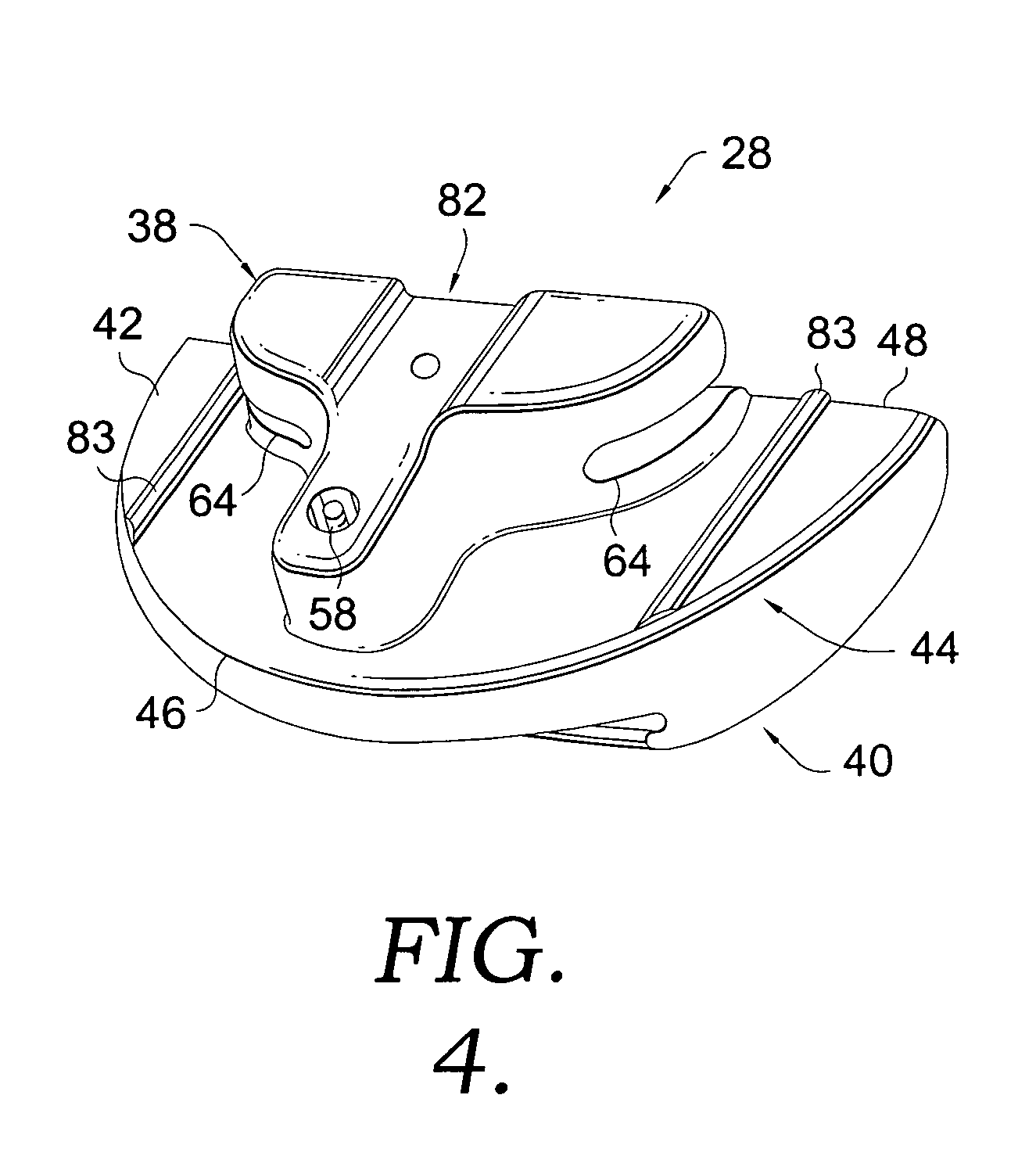Adjustable balancing board
a technology of balancing board and pivot, which is applied in the direction of balance beams, gymnastics, stilts, etc., can solve the problems of not providing for separately adjusting, and achieve the effects of less stability, more stability, and more stability
- Summary
- Abstract
- Description
- Claims
- Application Information
AI Technical Summary
Benefits of technology
Problems solved by technology
Method used
Image
Examples
Embodiment Construction
[0018]FIGS. 1 and 2 show generally the adjustable balancing board 10 of one embodiment of the present invention. A platform 12 presents a top engagement surface 14 onto which a user will position themselves and an underside or bottom surface 16 onto which a hemispherical fulcrum 18 is slidably mounted. The hemispherical fulcrum 18 is configured to contact a surface 100 for pivoting thereon when a user is positioned on the top engagement surface 14 of the platform 12.
[0019]The platform 12 may be fabricated as a single piece of molded plastic such that it can be shaped into the desired configuration. Numerous gripping elements 20 (e.g., ridges and grooves) are formed onto the top engagement surface 14 of the platform 12 in various patterns to provide traction for the user's footwear, hands, or other parts of their body resting on the surface 14. To provide a smooth boundary limit for pivoting about the hemispherical fulcrum 18, the platform 12 has a pair of arcuate side edges 22. If t...
PUM
 Login to View More
Login to View More Abstract
Description
Claims
Application Information
 Login to View More
Login to View More - R&D
- Intellectual Property
- Life Sciences
- Materials
- Tech Scout
- Unparalleled Data Quality
- Higher Quality Content
- 60% Fewer Hallucinations
Browse by: Latest US Patents, China's latest patents, Technical Efficacy Thesaurus, Application Domain, Technology Topic, Popular Technical Reports.
© 2025 PatSnap. All rights reserved.Legal|Privacy policy|Modern Slavery Act Transparency Statement|Sitemap|About US| Contact US: help@patsnap.com



